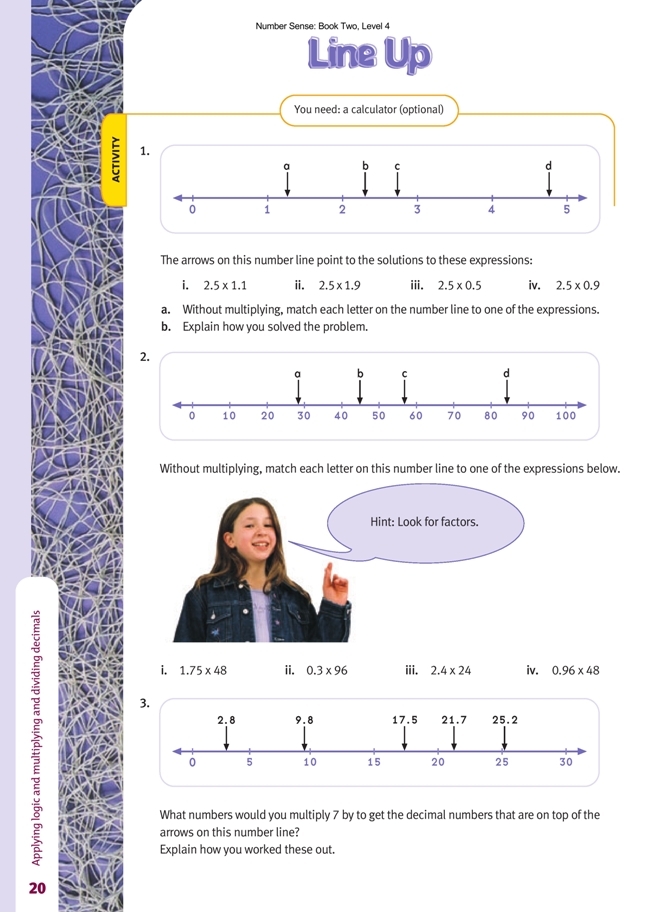This is a level 5 number activity from the Figure It Out series. It relates to Stage 8 of the Number Framework.
A PDF of the student activity is included.
Click on the image to enlarge it. Click again to close. Download PDF (660 KB)
use rounding to multiply decimals
A calculator (optional)
Question 1 will help the students to gain a sense of the magnitude of products of decimal numbers without the need for exact calculations. They will need to be able to round decimal numbers to make approximations through mental multiplication. For example, 2.5 x 1.1 is going to be a bit more than 2.5, whereas 2.5 x 0.9
will be a bit less than 2.5. In both cases, the initial step would be to think of the 1.1 and 0.9 as being close to 1. The expression 2.5 x 1.9 could be thought of as being roughly equal to 2.5 x 2. The result will therefore be a bit less than 5. The students may work out the point on the number line for the expression 2.5 x 0.5 by elimination, that is, by seeing which point is left after the other three expressions have been matched. Alternatively, by equating 0.5 with 1/2, they should be able to work out that 0.5 x 2.5 will be 11/4 or 1.25.
The tasks in question 3 can be thought of as open number sentences that need to be made true, basically by using the 7 times table. For example, the first one is x 7 = 2.8, the second x 7 = 9.8, and so on. The students should be able to do all of these mentally, but they will need to use their number sense (and perhaps their calculators) to check that the decimal point is in the correct place. For instance, because 4 x 7 is 28, the solution to the first number (2.8) must be 0.4. This makes sense because 0.4 of 7 means a bit less than half of 7, which 2.8 satisfies. Some students may see the connection between 2.8 and 9.8 (the next arrow point). If they divide 7 into 9.8, they will find that it goes once, with 2.8 left over. Logically, then, 7 must divide into 9.8 exactly 1.4 times. The next arrowed number, 17.5, can be handled in the same way. That is, 7 goes into 17.5 twice, with 3.5 left over, into which 7 will go 0.5 times. Result: 2.5. The last two numbers can be worked out in a similar way.
Answers to Activity
1. a. i. c
ii. d
iii. a
iv. b
b. 2.5 is a factor in each product, so the order of the other factors matches the order of the arrows
(0.5, 0.9, 1.1, 1.9).
2. i. d
ii. a
iii. c
iv. b
3. 0.4 (2.8 ÷ 7 = 0.4, so 0.4 x 7 = 2.8)
1.4 (9.8 ÷ 7 = 1.4, so 1.4 x 7 = 9.8)
2.5 (17.5 ÷ 7 = 2.5, so 2.5 x 7 = 17.5)
3.1 (21.7 ÷ 7 = 3.1, so 3.1 x 7 = 21.7)
3.6 (25.2 ÷ 7 = 3.6, so 3.6 x 7 = 25.2)
Explanations will vary, but using the family of facts idea is useful. For example, with x 7 = 2.8:
2.8 ÷ 7 = , so = 0.4
